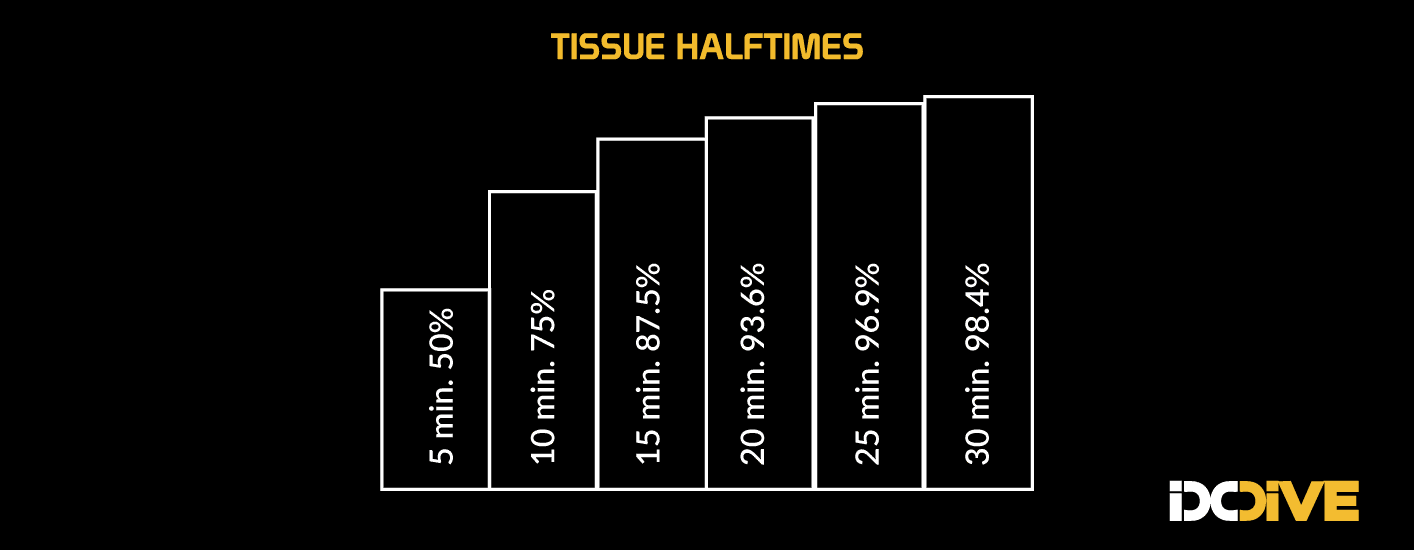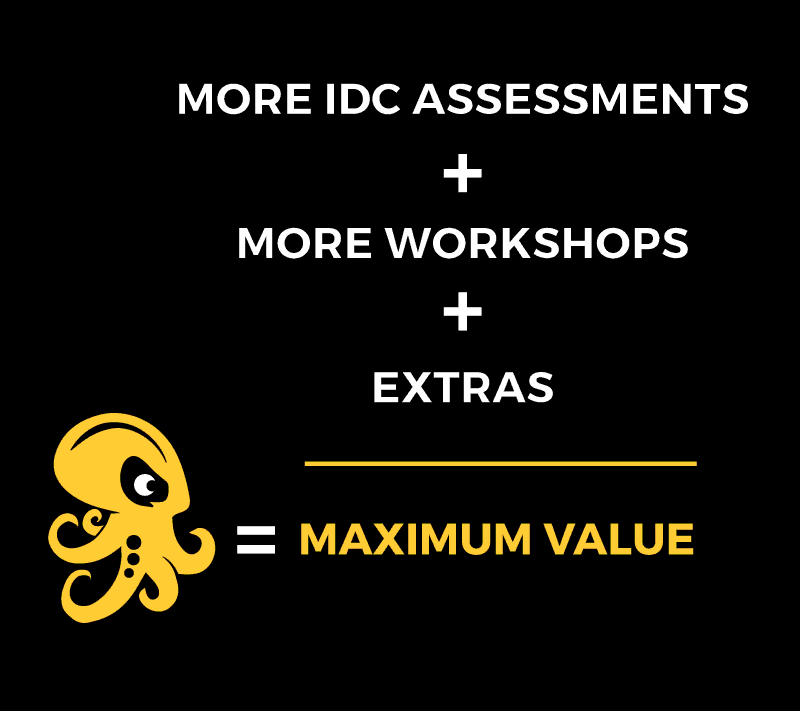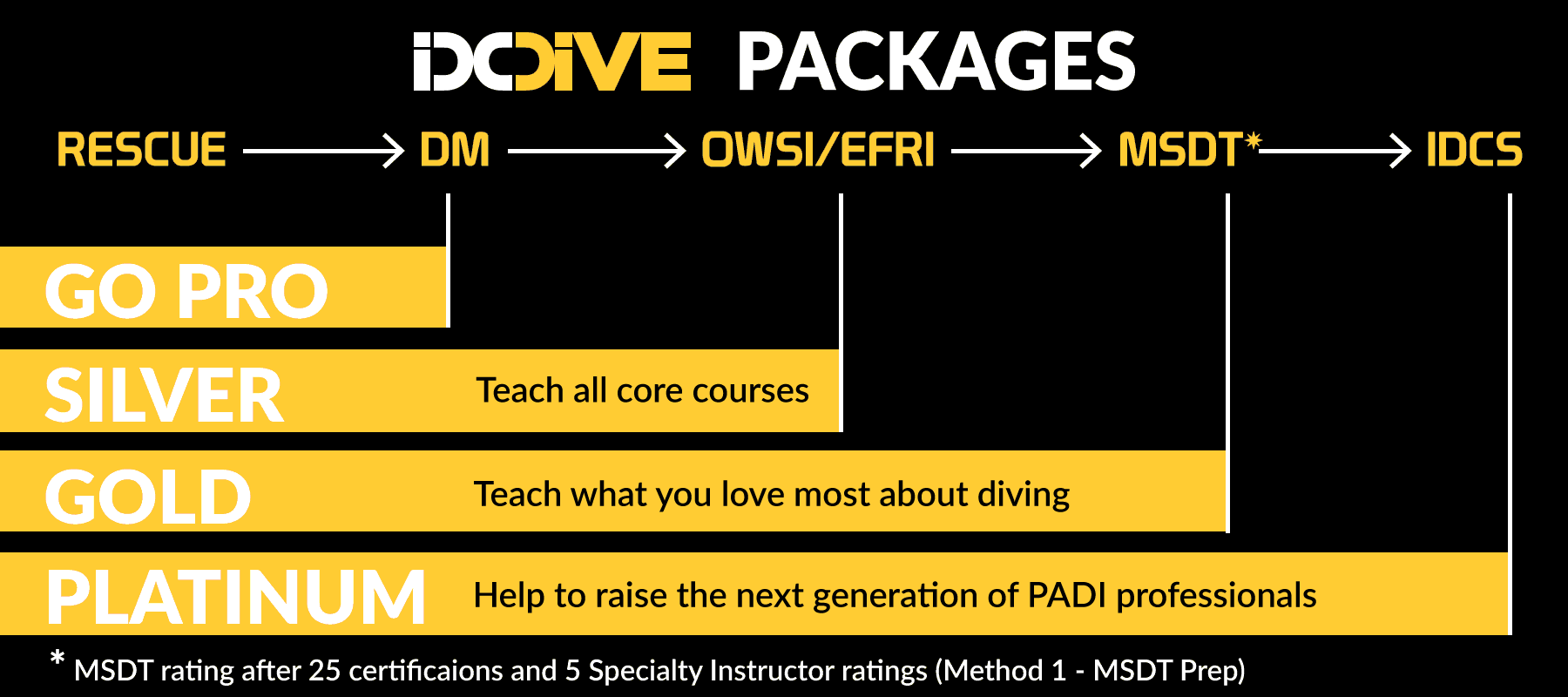Dive Theory Decompression Theory
DOM GIBBINGS

Decompression Theory
Once you have followed our study guidelines, use these Revision guides to help you memorise the required knowledge for your IDC & IE dive theory exams.
The Haldane Decompression Model
Haldanean Model
A Haldanean model consists of several compartments, each with a halftime (in minutes) that represents how fast it absorbs and releases nitrogen and an M-value that sets the maximum nitrogen pressure a diver can surface with.
There is no direct relationship with the human body (the model is not supported by direct tests)
Tissue Compartments
Different parts of the body absorb and release dissolved nitrogen at different rates.
A Tissue compartment is a mathematical model consisting of multiple theoretical tissues. Haldane’s original model had 5 compartments.
FAST COMPARTMENTS = Short halftimes
SLOW COMPARTMENT = Longer halftimes
Halftimes
Halftime is the time in minutes for a particular compartment to go halfway from its beginning tissue pressure to saturation at a new depth, in exponential progression.
After 6 halftimes the compartment is considered saturated (98.4%) [tissue pressure = msw/fsw gauge]
Halftimes are assigned in minutes. Haldane ranged from 5 to 75 minutes. Modern models range from 3 to more than 600 minutes.
Example: After 5 min a 5 min halftime compartment will have how much tissue pressure at 18m in sea water? (9)
Example: A 20’ halftime compartment will have how much tissue pressure after 40 min at 24 msw (18)
Example: How long would it take a 120 min compartment to saturate to 30 msw? (720 min at any depth)
Example: After 2 hours at 12 m., a 40 min compartment would have ? (10,5)
Example: how much nitrogen would the 5, 10, 20 and 60 minute halftime compartments each have after 60 minutes at 18 meters? (18;18;15,75;9)

M-Value
Maximum tissue pressure allowed in the compartment when the diver surfaces.
The faster the compartment (shorter halftime), the higher the M-value (the more nitrogen it is allowed to have when surfacing); the slower the compartment, the lower the M-value.
You need to know the altitude when diving because most decompression models are based on surfacing sea level.
CONTROLLING COMPARTMENT = the compartment that reaches the M-value first
The faster the compartment, the shorter halftime.
The slower the compartment, the lower the M-value
The higher the M-value, the more nitrogen it is allowed to have upon surfacing.
M-values are from A to Z in the RDP
US Navy Table and Repetitive Dive
US Navy
The US Navy tables were developed primarily for military decompression diving. They were used for recreational diving because:
- They were widely available.
- Many early recreational divers were former military divers.
- Before the rise of dive computers.
US Navy vs Haldane
| US NAVY | HALDANE MODEL |
|---|---|
| 6 compartment model | 5 compartment model |
| 120 minute halftime | 75 minute halftime the longest compartment |
| surface interval credit for the next dive | no provisions for repetitive dive |
Recreational Dive Planner (RDP)
RDP
In 1987 PADI Divemaster Dr. Raymond E. Rogers designed a table adequate for recreational diving.
You can’t interchange Pressure Groups between the RDP and the US Navy tables because they’re based on two different models.
The RDP was originally introduced in two forms (table & wheel). The eRDP (electronic RDP) is the newest and third format available.
RDP vs US Navy
| RDP | US NAVY |
|---|---|
| No decompression (recreative) dives | Stage of decompression use |
| 14 compartment model | 6 compartment model |
| 60 minutes surface credit | 120 minutes surface credit |
| Halftimes with faster gas washout (6 hours) | Halftimes slower gas washout (12 hours) |
| Designed for multiple dives a day with shorter surface interval | Designed for military use (limited dives a day with a longer surface interval) |
| Represent a wide part of the population | Taste only in military young male subjects. |
| More appropriate M-values (Doopler detected bubbles) | M-values based on DCS / no DCS |
Dive Computers
Dive computers
Computers essentially write custom dive tables for exact dives
- Eliminates unnecessary rounding
- Longer dive times
Computer Groups
SPENCER LIMITS 60 MINUTES WASHOUT
RDP-like No Deco limits, 60 minutes surface interval credit
SPENCER LIMITS EE WASHOUT
EE (= Experimental Exponential)
RDP-like No Deco limits, compartments washout are underwater rate.
BUHLMAN LIMITS EE WASHOUT
Shorter than RDP limits, compartments washout are underwater rate
Special Rules & Recommendations
General Rules
Cold/strenuous dives – plan as if 4m deeper than actual
Each successive dive is to the same or shallower depth
Limit the depth according to your training and experience
With multiple repetitive dives:
- W or X – 1 hour surface interval on all subsequent dives
- Y or Z – 3 hour surface interval on all subsequent dives
Repetitive Dive limit – 30 m
Maximum Recreational Depth limit – 40 m
If you accidentally go deeper?
- Emergency decompression stop for 8 minutes at 5m
- Do not dive again for at least 6 hours
Safety Stops
- Recommended: after every dive
- Required after:
- Any dive to or deeper than 30m;
- Any dive made within 3 pressure groups of NDL;
- Any dive reaches any limit on the RDP
Emergency Decompressions
- 8 min at 5m when limit is exceeded by 5 min or less
- 15 min at 5m (or as long as air supply permits) when limit is exceeded by more than 5 min
Omitted Decompression
- Do not reenter the water
- Do not dive for at least 24 hours
- Monitor for signs or symptoms of DCS
- Breathe oxygen and seek medical assistance if signs/symptoms occur
Altitude Considerations – Special procedure must be implemented when using the RDP at altitudes greater than 300m
Flying After Diving
- Minimum surface interval of 12 hours
- Divers who plan to make daily, multiple dives for several days or make dives that require decompression stops should take a special precaution — 18 hours before flight.
Computer Rules
Procedure if your computer fails
- Slowly ascend to 5m and make a safety stop — extended if necessary
- If your dive profile is within no stop limits, you may be able to resume diving using the RDP
- If not, stay out of the water according to manufacturer recommendation
⎮ Privacy Notice ⎮ Cookies Policy ⎮ Sitemap ⎮ © IDC DIVE 2018, Powered by Katuak






